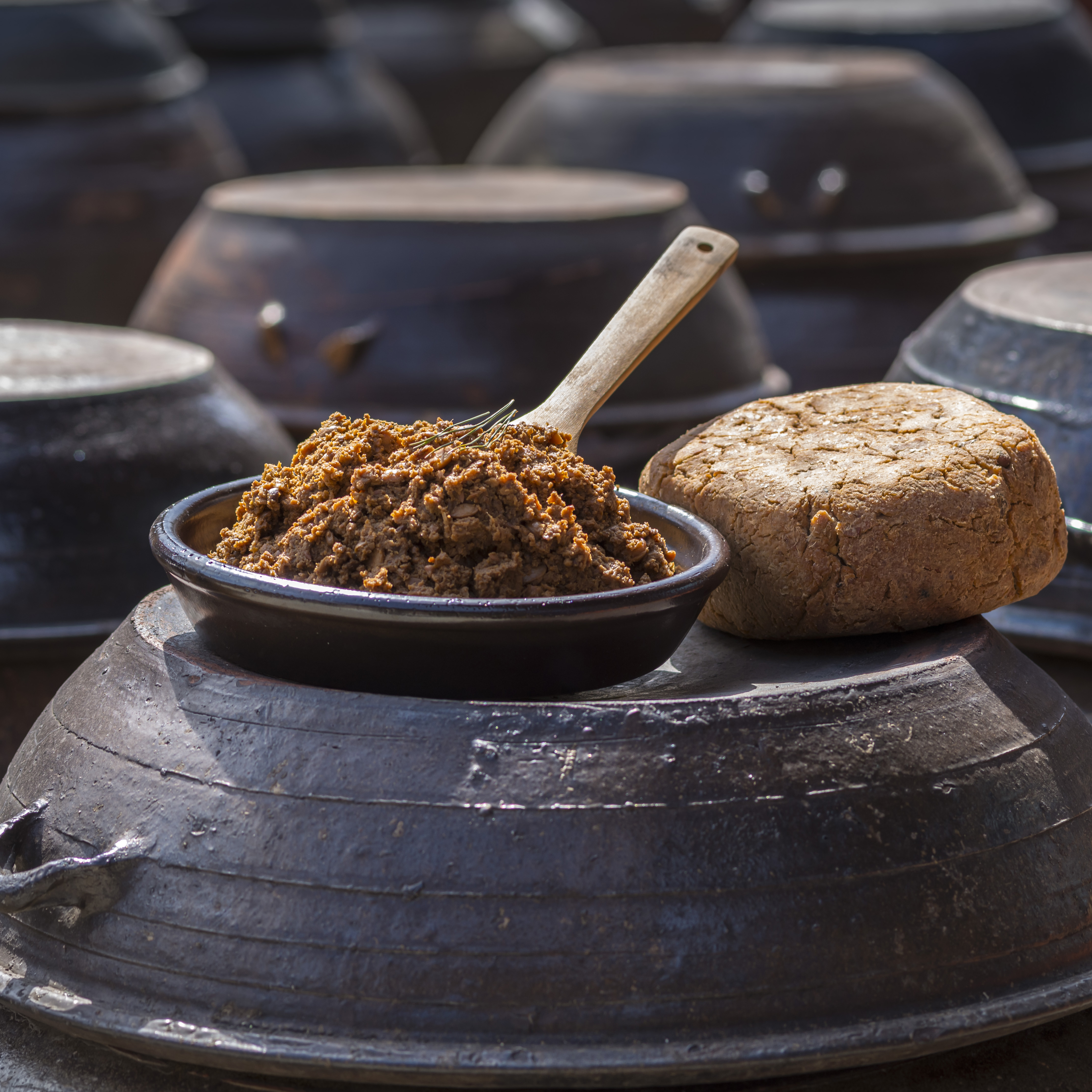
vol.32 | DOENJANG (Soybean Paste)
Korean traditional food, Doenjang
0 0 2024-10-29


vol.32 | DOENJANG (Soybean Paste)
Korean traditional food, Doenjang
0 0 2024-10-29
DOENJANG is a traditional Korean fermented food made primarily from soybeans. The history of DOENJANG dates back to the period when soybean cultivation began, and records from the Three Kingdoms era describe the use of MEJU (Fermented Soybean Lump) to make this condiment. Historical texts from the Goryeo Dynasty, such as the 『GORYEO-SA』, indicate that DOENJANG was a common food consumed by people of all social classes, and it’s also mentioned in the cookbook of the Joseon Dynasty, showing that it was widely used in the Joseon era. Various cookbooks from the Joseon Dynasty detail the types of DOENJANG and methods for making it, confirming that it was made and consumed in different regions and households.

DOENJANG is characterized by its deep flavor and rich aroma, which develop during the fermentation process. To make DOENJANG, soybeans are boiled and fermented into MEJU (Fermented Soybean Lump), which is then soaked in saltwater brine. After 1 to 2 months, the MEJU (Fermented Soybean Lump) is removed and crushed to produce DOENJANG. The fermented black liquid that results from this process is traditional soy sauce. The flavor of DOENJANG intensifies and deepens with extended aging.
DOENJANG is used in a variety of dishes, including DOENJANG-JJIGAE (Soybean Paste Stew), DOENJANG-GUK (Soybean Paste Soup), and as a seasoning. Today, most Korean households use either homemade or commercially produced DOENJANG, making it an essential ingredient in Korean cuisine alongside soy sauce and red pepper paste. Recently, DOENJANG has gained international attention as a health food due to its rich content of vitamins, minerals, and protein. DOENJANG continues to develop its value by combining traditional Korean flavors with modern cooking methods.